Spiders are often misunderstood creatures, lurking in the corners of our homes or weaving intricate webs in our gardens. While some people find them fascinating, others might get a case of the heebie-jeebies just by thinking about these eight-legged critters. Whether you’re an arachnophobe or simply curious, some spider behaviors are so bizarre they make even the creepiest of crawlies seem downright ordinary.
1. The Dance of the Peacock Spider
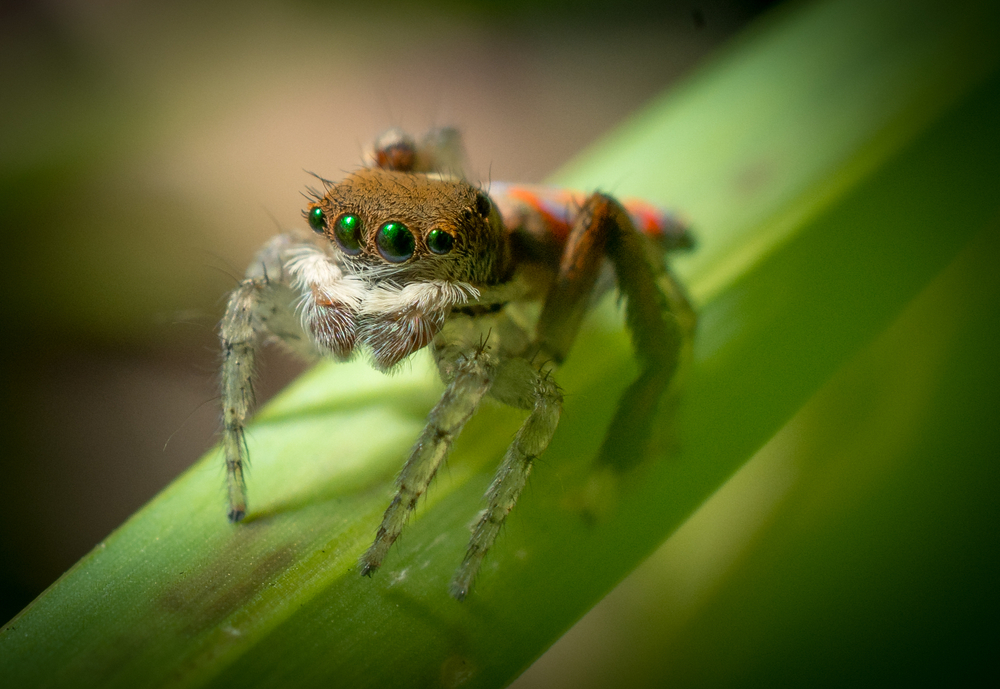
If you think spiders are all about business and no fun, think again. The peacock spider, found in Australia, is well-known for its colorful appearance and intricate mating dance. During courtship, the male peacock spider raises his brilliantly colored abdomen and performs a dance to attract a mate. According to National Geographic, this elaborate display involves rhythmic leg movements and vibrant fan-like extensions. It’s like a miniature disco party happening in the world of insects!
But it’s not all fun for the male peacock spider. If he fails to impress the female with his dance moves, she might just eat him. This brutal reality adds a high-stakes element to their courtship rituals. Yet, somehow, these tiny romancers manage to pull off their risky performances, proving that even in the spider world, love can be a dangerous game. Watching a peacock spider dance might just make you see these arachnids in a whole new light.
2. The Trapdoor Spider’s Sneaky Attack

If you’ve ever wondered what it might be like to be on a secret mission, look no further than the trapdoor spider. These crafty critters create burrows with camouflaged doors, waiting patiently for unsuspecting prey to wander near. The trapdoor spider’s stealthy hunting technique relies on the element of surprise. When an insect gets too close, the spider leaps out, snatching its meal with lightning speed. It’s a classic case of “blink, and you’ll miss it.”
This clever ambush strategy allows trapdoor spiders to conserve energy while increasing their chances of a successful hunt. It’s like having a front-row seat to nature’s most thrilling predator-prey encounter. You might say that these spiders have mastered the art of patience and precision. What’s more, their burrows are engineering marvels — stable enough to withstand the elements and perfectly disguised. It’s a reminder that nature’s architects come in all shapes and sizes.
3. The Magical World of Spitting Spiders
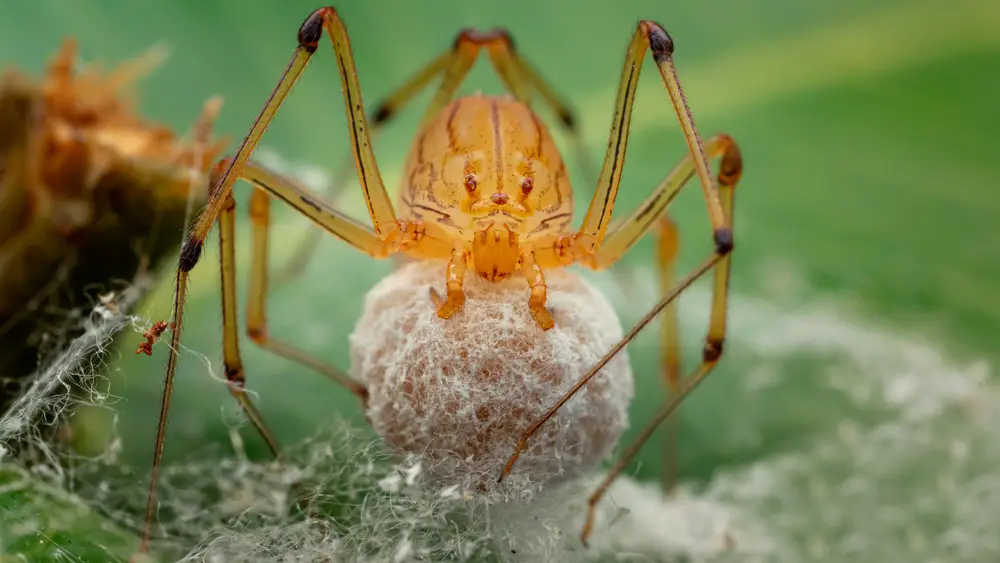
Imagine having the ability to spit venom and silk at your prey. Sounds like something out of a superhero movie, right? Well, the spitting spider does just that, using its unique abilities to capture and immobilize its prey. These spiders have a special gland that produces a sticky concoction of venom and silk, which they project at their target in a rapid-fire attack. According to BBC Earth, this ingenious hunting method is as effective as it sounds.
The spitting spider’s precision is astonishing; it can hit a moving target accurately from several body lengths away. This skill allows it to subdue prey much larger than itself. Once the prey is immobilized by the sticky silk, the spider moves in to deliver a more traditional venomous bite. It’s an incredible example of biological ingenuity, showcasing how evolution can lead to some truly extraordinary survival strategies. Spitting spiders might not wear capes, but their abilities are nothing short of super.
4. The Jumping Spider’s Astounding Vision
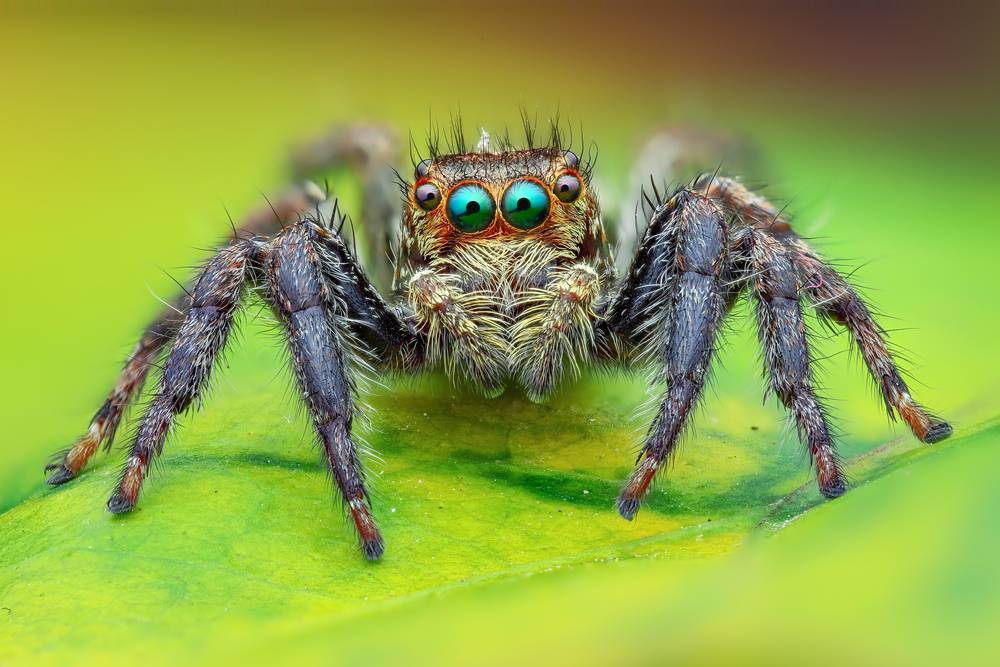
Jumping spiders are renowned for their exceptional vision, which is among the best in the arthropod world. Unlike most spiders that rely on webs, jumping spiders are active hunters, pouncing on their prey with agility and precision. Their eyesight is so advanced that they can see in color and even perceive ultraviolet light. This keen vision allows them to navigate complex environments and pinpoint prey from a distance, making them formidable hunters despite their small size.
In addition to excellent eyesight, jumping spiders have an almost endearing curiosity about their surroundings. They often interact with objects and creatures much larger than themselves, exhibiting a level of fearlessness that belies their stature. These little adventurers are known to perform intricate exploratory behaviors, hopping from leaf to leaf with an acrobatic flair. Watching a jumping spider in action is like witnessing a tiny ballet, full of grace and purpose. They’re a testament to the wonders of nature’s adaptability.
5. The Social Lives of Anelosimus Spiders

While most spiders are solitary creatures, members of the Anelosimus genus are known for their social structures. These spiders live in colonies, working together to construct vast communal webs that can house hundreds of individuals. Cooperation is key in these spider societies, with members collaborating on tasks such as hunting and web maintenance. This level of social organization is highly unusual among spider species and offers a fascinating glimpse into alternative evolutionary strategies.
Living in a communal web provides various advantages, such as improved chances of capturing prey and enhanced protection against predators. However, it also comes with its challenges, like increased competition for resources and potential conflicts. Despite these hurdles, Anelosimus spiders have managed to thrive, showcasing the benefits of social living. Observing these spider colonies challenges our perceptions of arachnids and highlights the diversity of life strategies in the animal kingdom. It’s a reminder that there’s much more to spiders than meets the eye.
6. The Orb-Weaver’s Web of Wonders
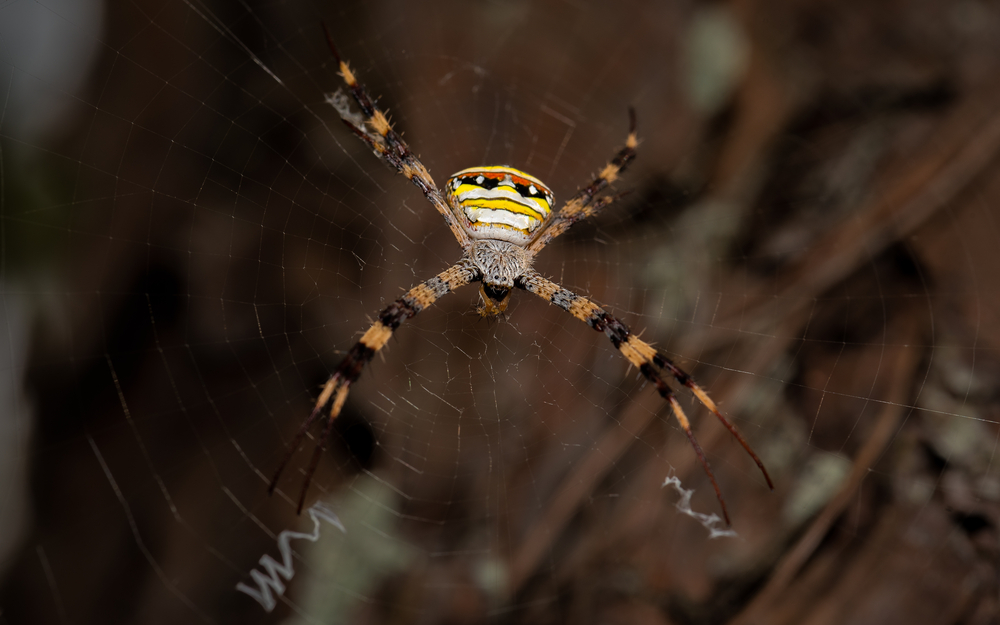
Orb-weaver spiders are the architects of the spider world, renowned for their stunningly beautiful webs. These intricate structures are not only aesthetically pleasing but also highly functional, designed to trap flying insects efficiently. Constructing such a web requires a remarkable degree of skill and precision, as each strand must be placed correctly to ensure the web’s structural integrity. The orb-weaver’s web-building process is a nightly ritual, often involving several hours of devoted work.
What’s fascinating is that each species of orb-weaver spider spins a differently patterned web, tailored to its specific prey and environment. Some orb-weavers even consume their webs every morning, recycling the silk proteins to build a new web each night. This efficient use of resources demonstrates a level of environmental adaptation that is both impressive and practical. Observing an orb-weaver spider at work is like watching a master craftsman at their best, turning silk into a deadly work of art.
7. The Mysterious World of Cave Spiders

Cave spiders inhabit some of the most extreme environments on Earth, thriving in the darkness of subterranean worlds. These spiders have adapted to life in caves by developing unique traits, such as reduced eyesight or even complete blindness, relying on other senses to navigate. Their ability to thrive in such inhospitable conditions is a testament to the adaptive power of evolution. Cave spiders often exhibit specialized feeding strategies, making the most of the limited food resources available in their dark habitats.
Despite the challenges of cave living, these spiders have carved out a niche for themselves, contributing to the delicate balance of cave ecosystems. They often play a crucial role in controlling the populations of other cave-dwelling organisms. Observing cave spiders in their natural environment is like peering into a hidden world, filled with wonders that remain largely unexplored by humans. These arachnids remind us that life can find a way, even in the most unexpected places.
8. The Widow Spider’s Web of Deception
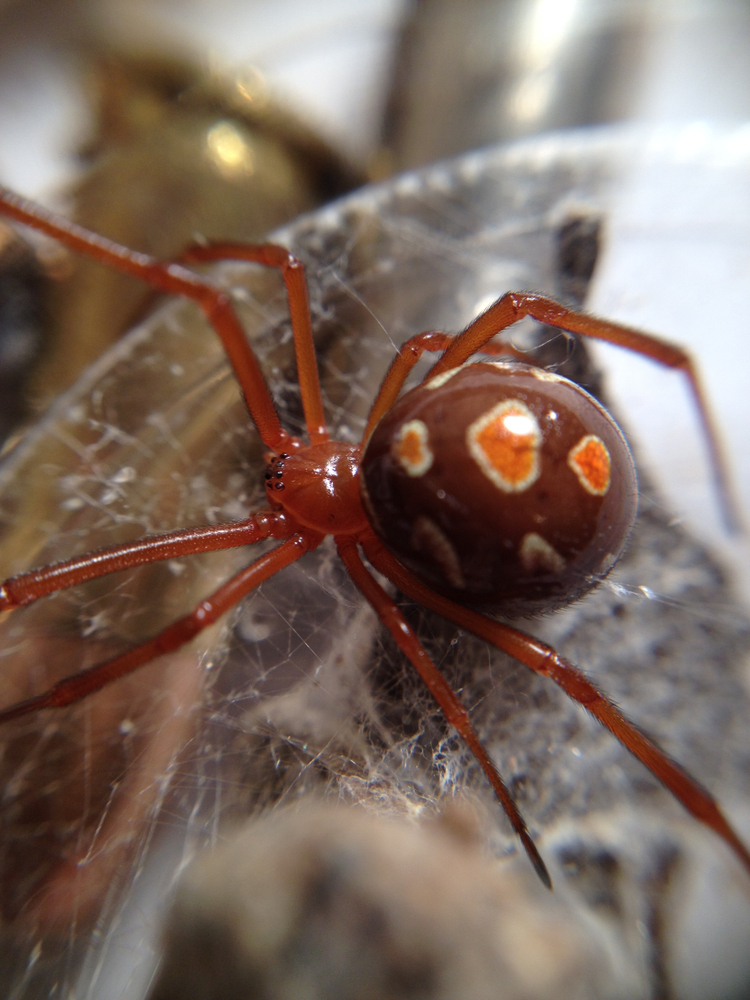
The widow spider, infamous for its potent venom, is also a master of deception. Its web is a chaotic tangle of silk, designed to ensnare unsuspecting prey with its sticky threads. The widow spider’s web may look haphazard, but it’s a highly effective trap for insects that wander too close. These spiders often hang upside down from their webs, waiting patiently for vibrations that signal trapped prey. Once an insect is caught, the widow spider wastes no time in subduing it with a venomous bite.
Interestingly, widow spiders are known for their cannibalistic mating behavior, with females sometimes consuming their mates after copulation. This behavior has fascinated scientists, offering insights into the complex dynamics of spider reproduction. Despite their fearsome reputation, widow spiders play an essential role in controlling insect populations. Their deceptive webs and dramatic mating rituals make them one of the most compelling subjects in the study of arachnids. Widow spiders are a perfect example of how appearances can be deceiving in the natural world.
9. The Goliath Birdeater’s Brute Strength
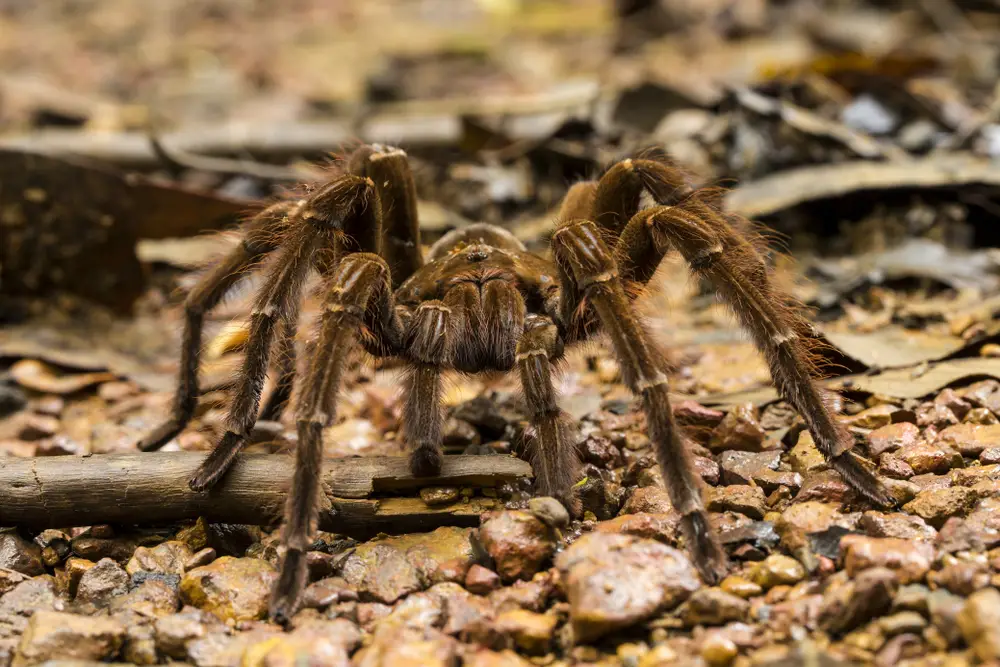
The goliath birdeater, one of the largest spiders on the planet, is a creature that commands attention. With a leg span of nearly a foot, this tarantula is an intimidating presence in the rainforests of South America. Despite its name, the goliath birdeater rarely preys on birds, instead targeting insects and small vertebrates. Its size and strength allow it to overpower various prey, making it a formidable predator in its ecosystem. Watching a goliath birdeater in action is like witnessing raw power in the natural world.
In addition to its impressive physical attributes, the goliath birdeater has some surprising defense mechanisms. When threatened, it rubs its legs together to release tiny, barbed hairs that can irritate potential attackers. This unusual form of defense highlights the spider’s adaptability and resourcefulness. These giant spiders are a marvel of the animal kingdom, showcasing the diversity and complexity of life on Earth. The goliath birdeater is a testament to the incredible potential of evolution, proving that bigger is sometimes better.
10. The Diving Bell Spider’s Aquatic Lifestyle
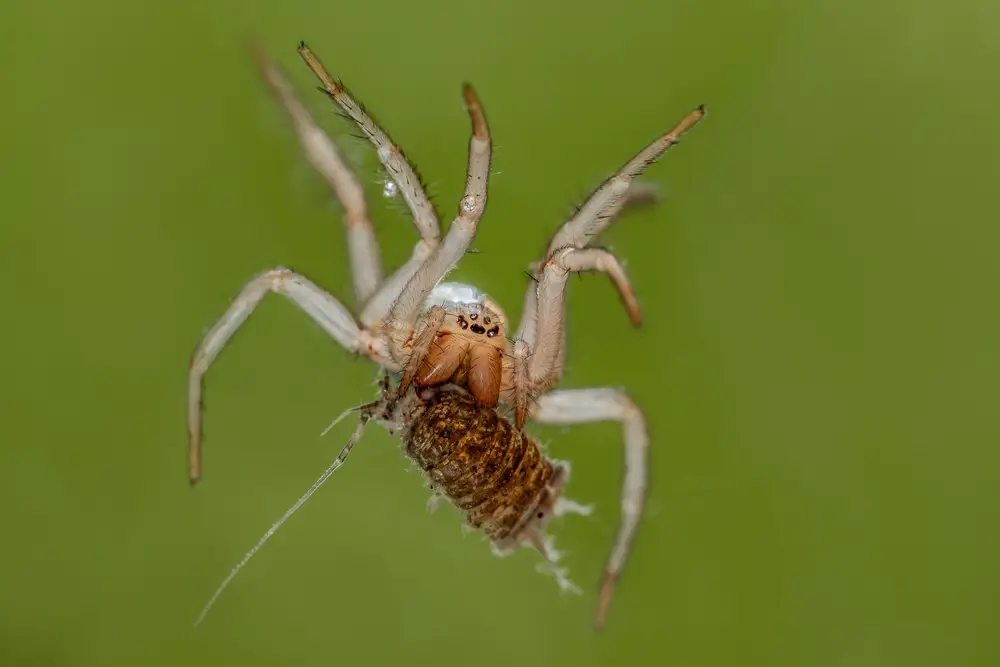
The diving bell spider is a true aquatic marvel, living almost entirely underwater. Native to Europe and Asia, this spider constructs a unique silk structure known as a “diving bell,” which it fills with air from the surface. This air-filled bubble allows the spider to breathe and hunt underwater, effectively creating a submerged habitat. The diving bell spider is the only known species of spider to live in this way, showcasing an extraordinary adaptation to its environment.
Living underwater offers the diving bell spider several advantages, such as reduced competition and protection from terrestrial predators. The spider’s ability to trap air with its diving bell highlights the remarkable versatility of silk. By observing the diving bell spider, scientists gain valuable insights into the potential applications of biomimicry in technology and engineering. This fascinating creature reminds us of the endless possibilities that nature can inspire. The diving bell spider is a symbol of innovation in the natural world.
11. The Gladiator Spider’s Net Casting Technique
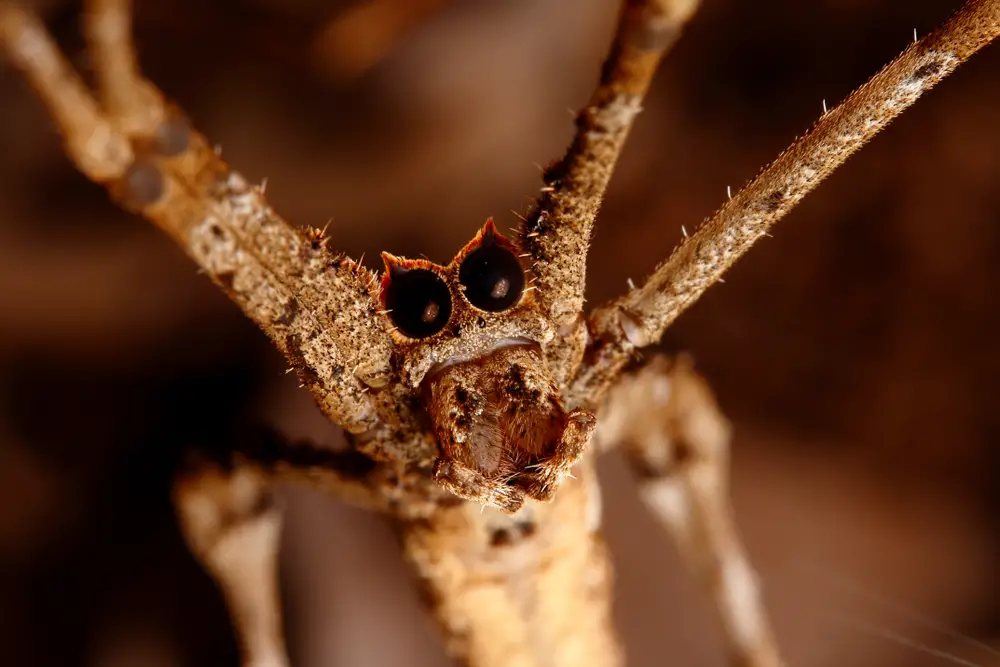
Imagine being able to cast a net to trap your dinner; that’s precisely what the gladiator spider does. This spider, also known as the ogre-faced spider, uses its silk to create a small, rectangular web that it holds between its front legs. Hanging from a branch, it waits for the perfect moment to launch its net at prey passing below. With lightning-fast reflexes, the gladiator spider ensnares its target in a silk cocoon, ready for a meal. Watching this hunting method is like witnessing a miniature gladiatorial battle in nature.
The gladiator spider’s net-casting technique is a remarkable adaptation that demonstrates the versatility of silk. This method requires precise timing and impressive coordination, highlighting the spider’s incredible hunting prowess. Gladiator spiders are a testament to the diversity of life strategies in nature, reminding us that there is no single way to survive and thrive. Observing these spiders in action offers a glimpse into the complexity and wonder of the natural world. It’s a reminder that sometimes the best defense is a good offense.
12. The Enigmatic Recluse Spider’s Healing Properties

The recluse spider, often feared for its venomous bite, has sparked interest for an entirely different reason. Research has suggested that its venom might hold potential medical applications, particularly in wound healing. Scientists have been exploring the possibility that the recluse spider’s venom could promote faster healing and tissue regeneration. This unexpected turn of events challenges the perception of these spiders as merely dangerous pests, revealing their potential as allies in medical science.
Despite their reputation, recluse spiders are typically shy and prefer to avoid human interaction. Their preference for secluded, undisturbed spaces makes encounters rare, yet the fear surrounding these spiders persists. By studying recluse spiders, researchers hope to unlock secrets that could lead to significant medical advancements. This ongoing research highlights the importance of preserving biodiversity and understanding the complex roles that even the most feared creatures play in our world. The recluse spider serves as a reminder of the hidden benefits that nature may hold.
